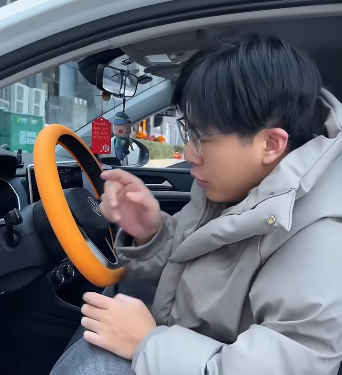
A car is designed to be a safe and reliable mode of transportation. However, many people don’t realize that certain items inside a vehicle can become dangerous—especially in the event of an accident, a sudden stop, or even on a hot day. Understanding the hidden risks can help you take necessary precautions to protect yourself, your passengers, and your car. In this article, we’ll explore the various dangerous items commonly found in cars and explain why they can be harmful.
1. Loose Objects in the Cabin
At first glance, small objects like a water bottle, mobile phone, or even a handbag might seem harmless. However, in the event of a sudden stop or crash, these loose items can become projectiles. For example, a 2-pound object can hit you with the force of 40 pounds if your car crashes at just 50 km/h. Common culprits include:
- Coffee mugs
- Laptops and tablets
- Groceries
- Umbrellas
- Tools and equipment
To stay safe, always secure loose items in the trunk or storage compartments.
2. Explosive Items
Many people leave pressurized items in their cars without considering the consequences. Under high heat or pressure, some items can explode or leak harmful chemicals. These include:
- Aerosol cans (like deodorant or spray paint)
- Lighters
- Power banks and lithium-ion batteries
- Cans of soda or beer
On a hot day, the temperature inside a car can rise to over 60°C (140°F), which is enough to cause these items to rupture or catch fire. Never leave such objects in a parked vehicle for an extended period.

3. Children’s Toys and Pet Items
Soft toys, plastic toys, and pet gear might seem innocent. But some toys contain small detachable parts or batteries that can be hazardous. Pet crates, leashes, and bowls can also turn into dangerous flying objects during a crash. It’s important to store these items properly or secure them with safety harnesses if necessary.
4. Chemical Cleaners and Car Fluids
It’s common to keep car-related cleaning products or maintenance fluids in the trunk. However, these can be extremely dangerous if mishandled or if they leak. Some of the most concerning items include:
- Windshield washer fluid
- Engine oil
- Brake fluid
- Glass cleaners
- Tire shine sprays
These chemicals are often flammable, corrosive, or toxic. If spilled, they can not only damage your car’s interior but also pose serious health risks. Always store them in leak-proof containers and keep them away from heat sources.
5. Sharp Objects and Tools
Many drivers keep tools in their car for emergency situations—such as tire irons, screwdrivers, and knives. While useful, these tools can be extremely dangerous if they are not stored properly. In the event of an accident, sharp objects can cause severe injury. Consider using a dedicated tool bag or box that keeps everything secure and out of reach.

6. Medication and Medical Supplies
Some people keep first-aid kits or prescription medications in the glove compartment or center console. While this is good for emergencies, there are risks:
- Heat sensitivity: Many medicines lose their effectiveness or become toxic when exposed to high temperatures.
- Child access: Medications should be stored out of reach of children to prevent accidental ingestion.
- Expired products: Outdated items can be ineffective or even harmful.
Make sure your medical supplies are current, sealed, and stored in a temperature-safe container.
7. Electronic Devices
Devices like GPS units, phones, tablets, and dashcams are essential for modern drivers, but they also pose risks:
- Overheating: Devices left in the sun can overheat and catch fire.
- Battery swelling or explosion: Damaged or low-quality lithium batteries can explode under stress.
- Distraction: Unsecured devices can fall or shift, tempting drivers to reach for them while driving.
Use proper mounts and never leave devices in direct sunlight for long periods.
8. Car Accessories
Some aftermarket accessories can actually make your car less safe. These include:
- Steering wheel knobs: These can get caught in sleeves or clothing.
- Oversized seat covers: They may block airbags or seat belt latches.
- Dashboard decorations: Hanging ornaments or bobbleheads can distract the driver or become projectiles.
Always be cautious when modifying your car. Stick to safety-tested accessories and ensure they don’t interfere with vehicle functions.

9. Gasoline and Fuel Containers
Carrying a gas can in your vehicle may seem like a smart backup plan, but it’s very risky. Gasoline is highly flammable and emits fumes that can ignite from a spark or static electricity. If you must carry fuel, use a certified container and secure it properly in the trunk with plenty of ventilation.
10. Paperwork and Personal Documents
While not dangerous in a physical sense, important documents like your driver’s license, insurance papers, or even credit cards left in the car can become a target for theft. If stolen, these can lead to identity theft, fraud, and a long legal hassle. Keep your documents with you or store them in a secure, hidden compartment.
11. Sunlight Magnifiers
Believe it or not, certain objects left in the car can magnify sunlight and cause burns or fires. Examples include:
- Water bottles
- Magnifying glasses
- Mirror decorations
These items can focus sunlight on one spot for too long, potentially igniting fabric or plastic surfaces. Always store such items out of direct sunlight.

12. Unattended Pets and Children
While they’re not “items,” it’s critically important to note that leaving pets or children in a hot car is extremely dangerous and potentially deadly. Even on a mildly warm day, the temperature inside a vehicle can rise to life-threatening levels in just minutes. Never leave pets or kids unattended in a parked car, even with the windows cracked.
Conclusion
A car can be filled with hidden dangers—many of them completely ordinary objects that become hazardous under the right (or wrong) conditions. Being aware of these risks is the first step to preventing injuries, fires, and accidents. Take the time to organize and secure items in your vehicle, and be mindful of what you leave behind, especially in hot weather or during long trips. A little caution goes a long way in keeping you and your passengers safe on the road.
Safety Checklist for Your Car:
- ✅ Secure all loose items before driving
- ✅ Avoid leaving pressurized or flammable items inside
- ✅ Keep sharp tools in a locked container
- ✅ Don’t leave electronics or batteries in direct sunlight
- ✅ Check medications and chemicals regularly
- ✅ Never leave children or pets in the car unattended
By following these simple tips, you can transform your vehicle into a much safer environment.


